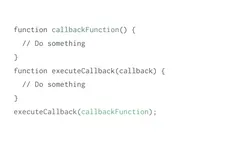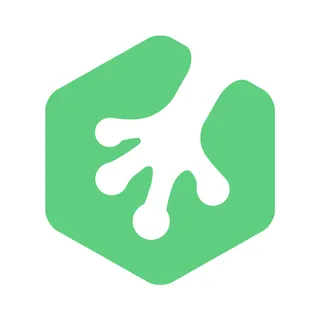
Callback Functions in JavaScript Course 
This course provides an in-depth look at callback functions in JavaScript. It is essential for both aspiring front-end and back-end developers to understand how to use callbacks in scenarios such as timers, user interaction events, and data retrieval from a server. Additionally, the course covers the use of callbacks in Node.js. ▼
ADVERTISEMENT
Course Feature
![]() Cost:
Cost:
Free Trial
![]() Provider:
Provider:
Treehouse
![]() Certificate:
Certificate:
Paid Certification
![]() Language:
Language:
English
![]() Start Date:
Start Date:
On-Demand
Course Overview
❗The content presented here is sourced directly from Treehouse platform. For comprehensive course details, including enrollment information, simply click on the 'Go to class' link on our website.
Updated in [March 06th, 2023]
This course provides an overview of callback functions in JavaScript. Students will learn the syntax of using callbacks, what anonymous functions are, and how to use anonymous functions as callbacks. Additionally, students will learn how to use one-off and repeat timers, as well as callbacks for user interaction. By the end of the course, students will have a comprehensive understanding of callback functions and how to use them in their own projects.
[Applications]
After completing this course, students can apply their knowledge of callback functions in JavaScript by creating functions that can be used as callbacks in timers, user interaction events, and loading data from a server. Additionally, students can use callbacks to create anonymous functions and use them as callbacks in one-off and repeat times. Finally, students can use callbacks for user interaction events.
[Career Paths]
1. Front End Developer: Front end developers are responsible for creating the visual elements of a website or application. They use HTML, CSS, and JavaScript to create the user interface and user experience. As a front end developer, you will need to be familiar with callback functions in order to create interactive elements and respond to user input. With the rise of mobile applications, front end developers are in high demand and the field is expected to continue to grow.
2. Back End Developer: Back end developers are responsible for the server-side of a website or application. They use languages such as PHP, Ruby, and Python to create the logic and functionality of the application. As a back end developer, you will need to be familiar with callback functions in order to create asynchronous processes and respond to user input. With the rise of cloud computing, back end developers are in high demand and the field is expected to continue to grow.
3. Full Stack Developer: Full stack developers are responsible for both the front end and back end of a website or application. They use a combination of HTML, CSS, JavaScript, and server-side languages to create the entire application. As a full stack developer, you will need to be familiar with callback functions in order to create interactive elements and respond to user input. With the rise of web applications, full stack developers are in high demand and the field is expected to continue to grow.
4. Mobile Developer: Mobile developers are responsible for creating mobile applications for smartphones and tablets. They use languages such as Java, Swift, and Objective-C to create the user interface and user experience. As a mobile developer, you will need to be familiar with callback functions in order to create interactive elements and respond to user input. With the rise of mobile applications, mobile developers are in high demand and the field is expected to continue to grow.
[Education Paths]
1. Bachelor of Science in Computer Science: This degree path focuses on the fundamentals of computer science, such as programming, algorithms, data structures, and software engineering. It also covers topics such as artificial intelligence, computer networks, and computer graphics. With the increasing demand for software developers, this degree path is becoming increasingly popular and is a great way to gain the skills needed to become a successful software developer.
2. Bachelor of Science in Software Engineering: This degree path focuses on the design and development of software applications. It covers topics such as software design, software architecture, software testing, and software project management. This degree path is becoming increasingly popular as software development is becoming more complex and requires a deeper understanding of software engineering principles.
3. Master of Science in Computer Science: This degree path focuses on advanced topics in computer science, such as artificial intelligence, computer networks, and computer graphics. It also covers topics such as software engineering, software architecture, and software project management. This degree path is becoming increasingly popular as software development is becoming more complex and requires a deeper understanding of computer science principles.
4. Master of Science in Software Engineering: This degree path focuses on the design and development of software applications. It covers topics such as software design, software architecture, software testing, and software project management. This degree path is becoming increasingly popular as software development is becoming more complex and requires a deeper understanding of software engineering principles.
Course Provider

Provider Treehouse's Stats at AZClass
The Callback Functions course in the JavaScript course provides an in-depth introduction to callback functions in JavaScript. It is crucial for aspiring front-end and back-end developers to understand how to use callbacks in scenarios such as timers, user interaction events, and server data retrieval. Additionally, this course covers the use of callbacks in Node js. Learners will understand the syntax for using callbacks, including how to use anonymous functions as callbacks. Learners will also learn how to use callbacks for one-shot and repeating timers.
Discussion and Reviews
0.0 (Based on 0 reviews)
Explore Similar Online Courses

Microsoft Azure Monthly Update: June 2021 Episode 5

Microsoft Azure Solutions Architect: Implement a Storage Strategy

Python for Informatics: Exploring Information

Social Network Analysis

Introduction to Systematic Review and Meta-Analysis

The Analytics Edge

DCO042 - Python For Informatics

Causal Diagrams: Draw Your Assumptions Before Your Conclusions

Whole genome sequencing of bacterial genomes - tools and applications

React Basics Course

JavaScript: Functions


Start your review of Callback Functions in JavaScript Course